Jump to the Recipe
A glass of fresh tomato juice is delicious and satisfying.
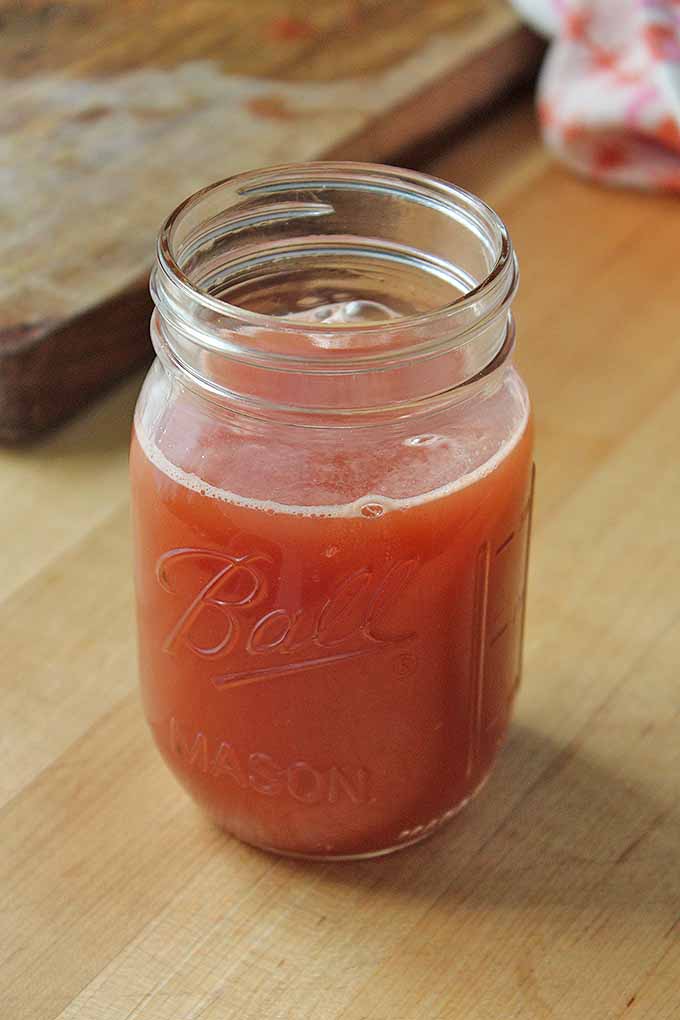
Wouldn’t you agree?
If you’ve never made one yourself, today’s the day to try it at home!
Pure tomato juice is surprisingly light and mild-tasting when it’s made fresh. I like to create a more elaborate flavor profile by adding additional types of fresh produce, fresh herbs, and a touch of spice.
This blend is somewhat like a V8-style beverage, mostly tomato with a hint of other ingredients, like celery.
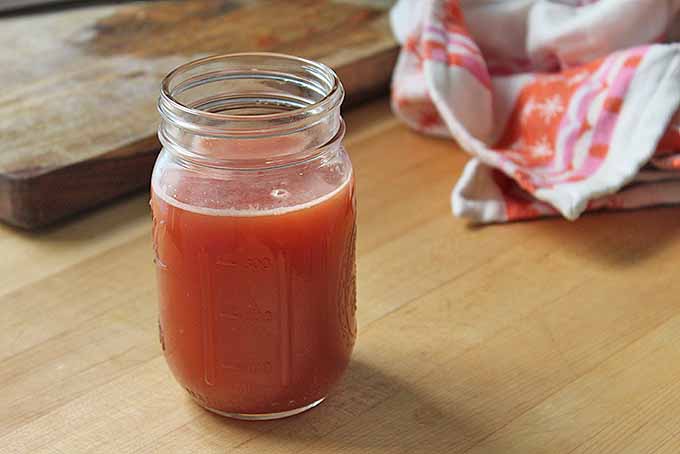
The oregano, basil, and onion are all optional, but I like to include them to punch up the flavor, and provide additional phytonutrients.
This blend would also make a nice base for a spicy Bloody Mary, made with home-infused hot pepper vodka.
Let’s get down to business with a discussion of the health benefits offered by the various ingredients, and then I’ll share the recipe so you can start making this recipe at home in your own kitchen.
Tantalizing Tomatoes
Loaded with antioxidants, vitamins, and key nutrients, they make a great beverage base. Though they are considered acidic, they also turn alkaline in the body, and can help to reduce inflammation.
General Tips
When choosing from among the many varieties, look for bright, firm tomatoes with no cracks or wrinkles. Soft tomatoes lack flavor, declining even more as they become increasingly overripe.

Store your grocery store or farmers market haul at room temperature. They will continue to ripen at home.
Use promptly when they have a rich color and yield to a gentle touch. This is when their nutritional value is at its peak.
Potential Health Benefits
- Aid digestion
- Aid kidney and bladder function
- Good for bone health
- May aid in keeping heart healthy
An Excellent Source of:
- Vitamin A
- Vitamin C
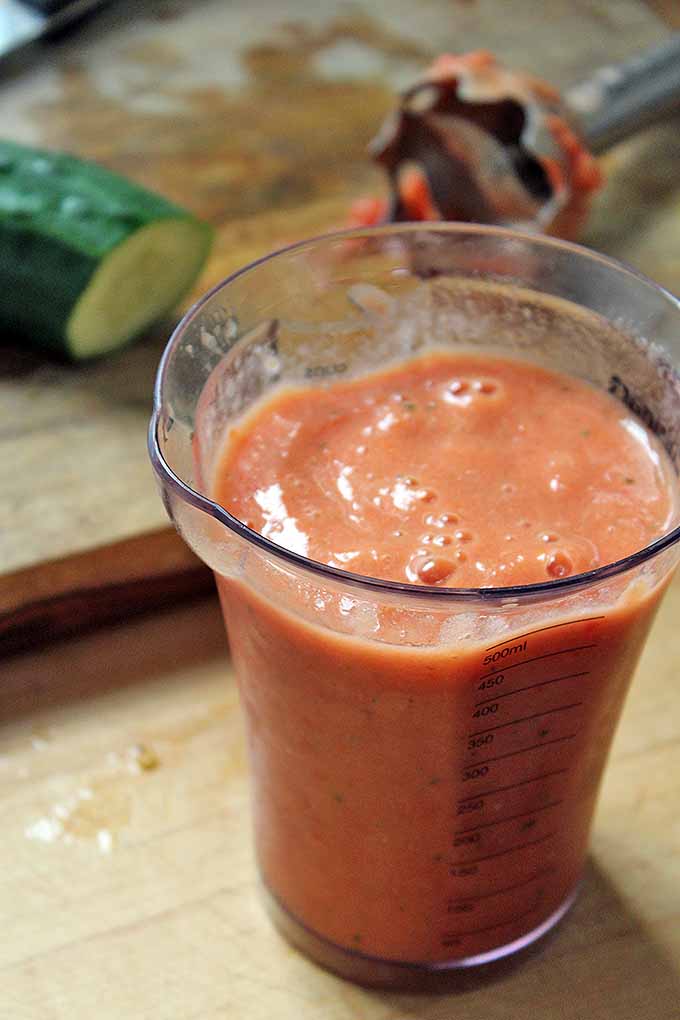
A Good Source of:
- Vitamin E
- Thiamin (Vitamin B1)
- Niacin (Vitamin B3)
- Vitamin B6
- Folate
- Magnesium
- Phosphorus
- Copper
- Vitamin K
- Potassium
- Manganese
Crisp Celery
Celery is a versatile vegetable. Wonderful raw and served by itself or in salads, it is equally delicious in cooked dishes like soups and stews.
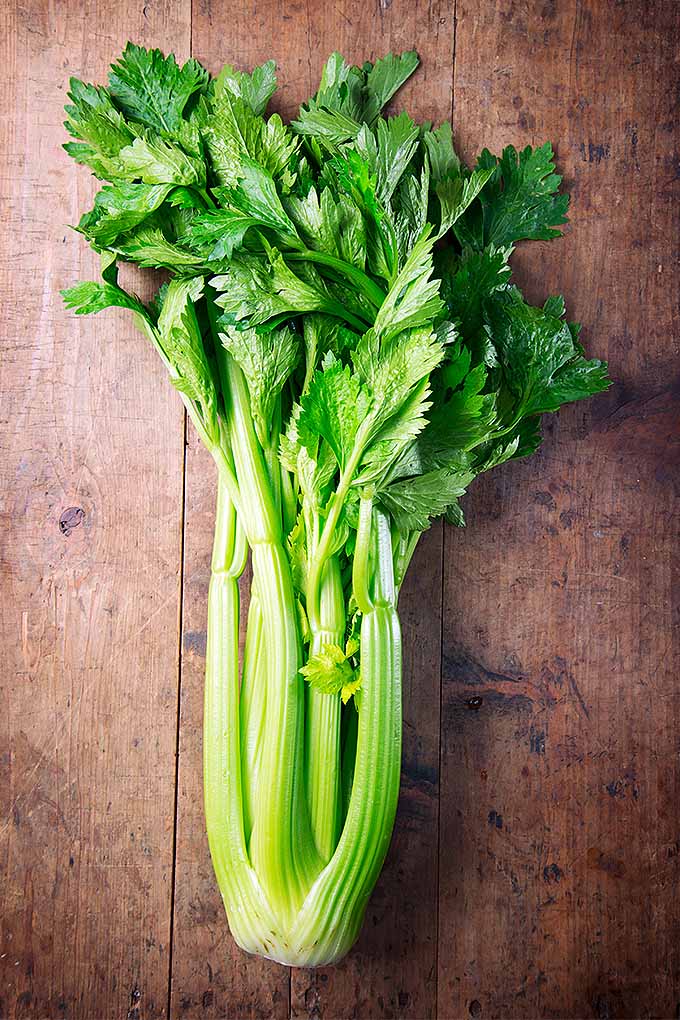
Surprisingly high in sodium, celery is mostly water, and very low in calories. Its ribs, heart, leaves, root, and seeds all offer nutritional benefits.
Adding the stalks and leaves to juices adds a hint of savory flavor that pairs well with leafy greens and other types of vegetables.
General Tips
Look for celery with firm ribs and fresh, leafy tops that haven’t gone to seed. You should plan to enjoy it within a week of purchase. You may use it after this point, but its health benefits will begin to decline.
Store whole stalks in the refrigerator, and wash just prior to use. You don’t need to worry about removing the strings before juicing, just be sure to clean them well.
Keep cut celery sticks fresh by placing them a tight-lidded container with just enough water to cover them. Replace with fresh water each day, and use as soon as possible.
Did you know that you can restore limp celery?
Simply make a fresh cut across the bottom of individual ribs, and stand them in cool water in the fridge for approximately 45 minutes. Be sure to remove them from the water once they are firm.
Soggy celery isn’t the best candidate for home juicing since fresh veggies offer the most nutritional benefit – but it’s nice to know that they can be saved if they’ve begun to wilt in storage!
Potential Health Benefits
- Contains natural sodium (even low-salt diets need to include a little)
- May help to reduce blood pressure
A Good Source of:
- Magnesium
- Potassium
- Folate
Crunchy Cucumbers
In addition to the antioxidants they contain, cucumbers are also a good source of silica, which is not commonly found in most foods. Silica supports the growth and maintenance of connective tissue, and aids healing in the body.
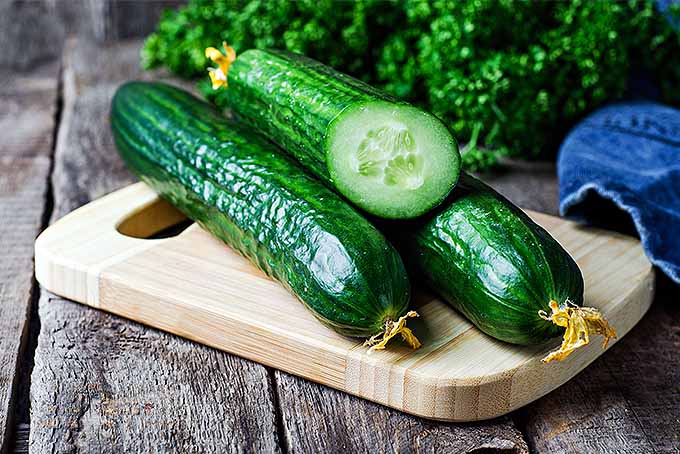
Consuming cucumbers may also help to reduce the risk of several types of cancer including breast, uterine, ovarian, and prostate. This is thanks to the polyphenols they contain, a type called lignans that have also been shown to help reduce the risk of cardiovascular disease.
General Tips
Cucumbers are very heat sensitive, so make sure to purchase them when they are fresh and cool, from a place where they have been stored in refrigeration if possible. They should be firm, and a nice shade of medium to dark green.
Whole cucumbers may be stored for several days in the refrigerator. Store cut leftovers in an airtight container in the fridge, and use within two days.
Process cucumbers with their skins on, as they are a great source of chlorophyll, beneficial phytochemicals for red blood cell health, and silica.
Cucumbers are very hydrating, and may contribute to healthy-looking skin as well.
Potential Health Benefits
- Anti-inflammatory
- Connective tissue support
- Improves nail strength
A Very Good Source of:
- Vitamin C
- Vitamin K
A Good Source of:
- Thiamin (Vitamin B1)
- Vitamin B6
- Folate
- Magnesium
- Phosphorus
- Potassium
- Copper
- Manganese
Flavorful Onions
Bermuda, Vidalia, Spanish, shallot, scallion… so many varieties from which to choose!
Onions are low in fat and rich in flavonoids and phytonutrients. Sliced into rings as a garnish, diced into a salad, or simmered with mushrooms, they are an integral part of food customs around the globe, and a staple with claims to multiple health benefits.
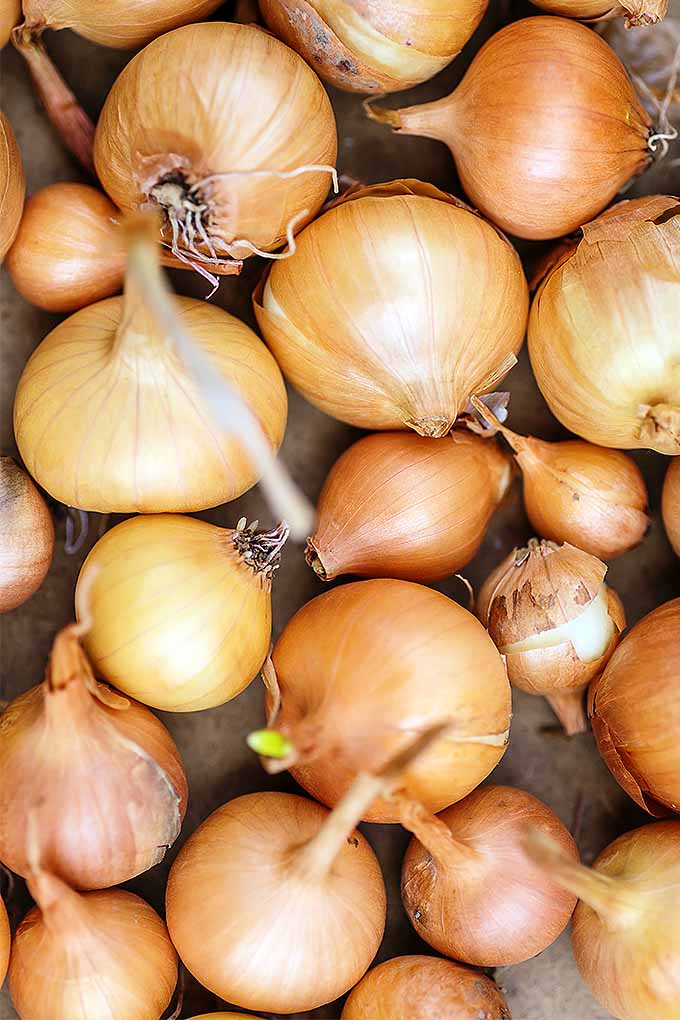
It might sound a little strange to imagine yourself drinking a glass of onion juice, but that’s not what we’re going for here. Adding just a little bit to your veggie blend adds a punch of flavor and healthy antioxidants that you’re going to love.
General Tips
Do you cry when you peel onions?
This is because peeling activates a sulfuric gas that gets into our eyes and becomes sulfuric acid, an irritant that makes our eyes water.
Peeling onions is a great idea before juicing, since it can be hard to wash away all of the dirt that might be trapped within the folds of an onion’s papery peel.
For tips that will help you to avoid tearing up, you’ll love this post.
Be careful not to remove too much of the outer portions, since these layers contain the most phytonutrients and antioxidants. Just removing the papery portions will do.
Potential Health Benefits
Consuming onions raw is a great way to retain quercetin, a key flavonoid that’s believed to contain cancer-fighting properties. It degrades when exposed to high temperatures, so you won’t find this phytonutrient in your onion soup.
- Anti-inflammatory
- Antibacterial benefits
- Bone and connective tissue support
- Cancer protection
- Cardiovascular benefits
- May help to reduce blood sugar levels
A Good Source of:
- Vitamin C
Outstanding Oregano
Oregano is a savory and pungent herb that is rich in antioxidants and phytonutrients. It is available fresh, dried, and as an essential oil.

Fresh is best for this application, since you want to work with raw ingredients when you’re making fresh juices.
General Tips
Like many of the other types of leafy produce mentioned here, oregano should be bright green with firm stems, and no yellow or dark spots. I use tender stems as well as the leaves.
Oregano is best stored in a zippered plastic bag in the fridge. I wash and dry my herbs, and use my mother’s trick of placing a paper towel in each bag to absorb any remaining moisture.
Plan to use within a week to 10 days, and change the towel if necessary.
Potential Health Benefits
- Antibacterial
- May be effective against giardia
- Anti-inflammatory
A Good Source of:
- Vitamin B6
- Potassium
- Copper
Beautiful Basil
Basil is so delicious in a fresh pesto or tomato sauce, but it also adds wonderful flavor to fresh juices, or even naturally flavor-infused water.
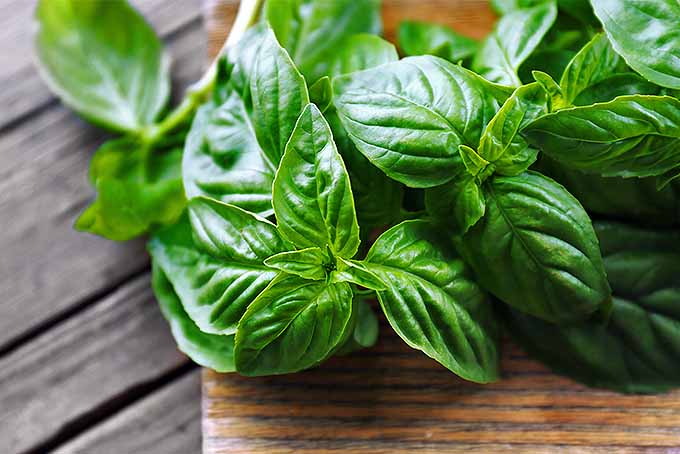
Keep in mind that the flavonoids found in this fresh herb are heat sensitive, so use it raw to obtain the maximum nutritional advantage.
General Tips
As with all green types of produce, choose fresh basil that is dark green, vibrant, and fresh. Don’t chose anything that looks wilted, brown, or pale.
I put mine in a glass of water (even better if it’s available with the roots still on) and just pick what I need if I am not using the whole bunch. This works well, unless your kitchen is unusually hot.
Without the roots, it may be washed, dried, and stored in a zippered plastic bag with a paper towel in the produce drawer of your refrigerator.
Potential Health Benefits
- Anti-inflammatory benefits
- Cardiovascular health benefits
- Protection against unhealthy bacterial growth
A Good Source of:
- Vitamin A
Bright Red Bell Peppers
Red bell peppers are perhaps the most nutritious type. This is because they have been left on the vine to ripen and sweeten. Of course, this also adds to their cost.
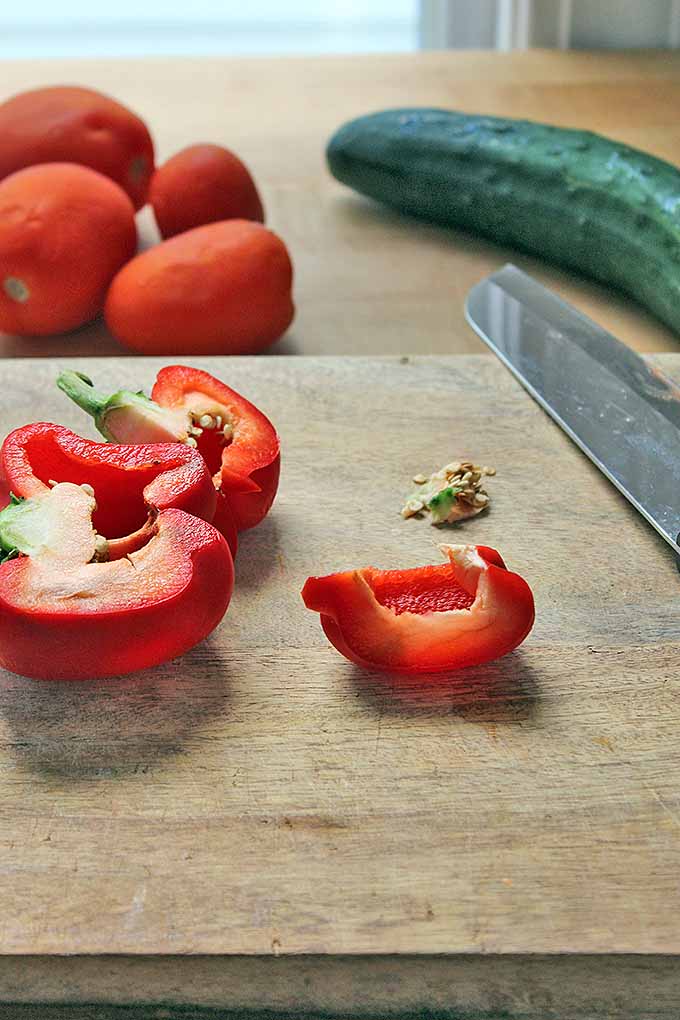
Rich in antioxidants and phytonutrients, raw red bell peppers feature prominently in gazpacho, a refreshing cold soup that you may enjoy.
A similar flavor profile can be found in this juice blend, with a smoother texture.
General Tips
When selecting red bell peppers, look for bright, unblemished, unwrinkled flesh that is firm to the touch.
You may keep bell peppers in the fridge for about a week, if you keep them whole.
Wait to wash peppers until you are ready to use them. When you cut into one with a serrated knife, it should be very crisp. Remove the stem, pith, and seeds before juicing.
Peppers that are eaten raw or cooked at low temperatures are the healthiest, as they have their phytonutrients intact.
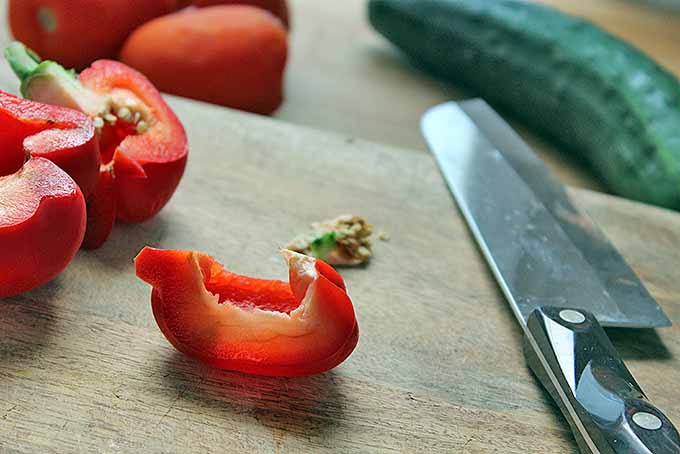
Potential Health Benefits
- May protect against some cancers
- Rich in antioxidants and phytonutrients
An Excellent Source of:
- Vitamin C
A Good Source of:
- Vitamin B6
- Vitamin A
Spicy Cayenne Pepper
Revered as a super food, the cayenne pepper is the fruit of the capsicum herb, and has been used in herbal remedies for centuries. This is because it contains capsaicin, a powerful anti-inflammatory agent.
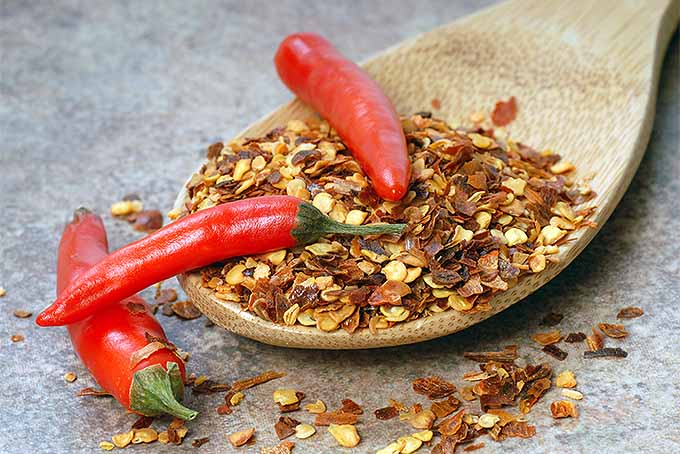
A.K.A. the chili pepper, cayenne is consumed raw, cooked, or dried and used whole, crushed, or powdered, for a spicy and healthful addition to a variety of dishes.
This small, bright-red pepper packs more heat than its cousin the jalapeno, and is used to spice up dishes like chili and curry.
General Tips
Use caution when handling these hot peppers. Don’t touch them and then rub your eyes!
When purchasing fresh cayenne, look for peppers with firm, bright, unblemished flesh.
Store whole in a zipper bag away from other foods. Alternatively, they may be threaded with string and hung to dry.
I recommend wearing disposable gloves when working with hot peppers. For fresh ones, wash and dry, then remove the stems and seeds, and proceed with your recipe.
If you haven’t cooked with hot peppers before or if they aren’t something that makes a regularly appearance in your diet, use them sparingly at first. You may need to build up a tolerance to the heat!
Potential Health Benefits
- Immune system boost
- Digestive aid
- Blood clot prevention
- May minimize some cancer risks
- Nasal decongestant
An Excellent Source of:
- Vitamin A
The Recipe
- 4 medium tomatoes
- 1 stalk celery
- 1 cucumber
- 1/4 onion (optional)
- 1 medium handful fresh oregano (optional)
- 1 medium handful fresh basil (optional)
- 1/4 red bell pepper
- 1/2 teaspoon sea salt
- Freshly ground black pepper
- cayenne pepper
- Lemon wedges
- Wash produce well. Remove the peel from the onion, and the stem and seeds from the bell pepper. Chop large pieces as needed to funnel through the chute of your machine.
- Process fresh vegetables and herbs, according to manufacturer’s instructions.
- Season with salt, pepper, and cayenne pepper to taste. Stir to combine.
- Chill and serve. Garnish with lemon wedges.
Recipe by Lori Hendrix.
Nutritional Information*
A Daily Boost
Make drinking homemade beverages a healthy part of your daily routine. Maybe you’d like to try some other blends like Spinach Apple and Sweet and Green Carrot after you’ve tried this one.

In addition to cayenne, you might like to try some other Superfood Add-Ins like goji berries, flax seed, and bee pollen. All of these make wonderful health-boosting additions to homemade juices and smoothies.
What’s your favorite blend of nutritious fruits and vegetables? Let us know in the comments section below!
The staff at Foodal are not medical professionals and this article should not be construed as medical advice. Foodal and Ask the Experts, LLC assume no liability for the use or misuse of the material presented above. Always consult with a medical professional before changing your diet, or using supplements or manufactured or natural medications.
Uncredited photos by Kendall Vanderslice, © Ask the Experts, LLC. ALL RIGHTS RESERVED. See our TOS for more details. Photos of herbs, vegetables, and juicer: Shutterstock. Significantly expanded and rewritten from a post originally written by Lori Hendrix. With additional writing and editing by Allison Sidhu.
*Nutritional information derived from a database of known generic and branded foods and ingredients and was not compiled by a registered dietitian or submitted for lab testing. It should be viewed as an approximation.
About Nan Schiller
Nan Schiller is a writer from southeastern Pennsylvania. When she’s not in the garden, she’s in the kitchen preparing imaginative gluten- and dairy-free meals. With a background in business, writing, editing, and photography, Nan writes humorous and informative articles on gardening, food, parenting, and real estate topics. Having celiac disease has only served to inspire her to continue to explore creative ways to provide her family with nutritious locally-sourced food.

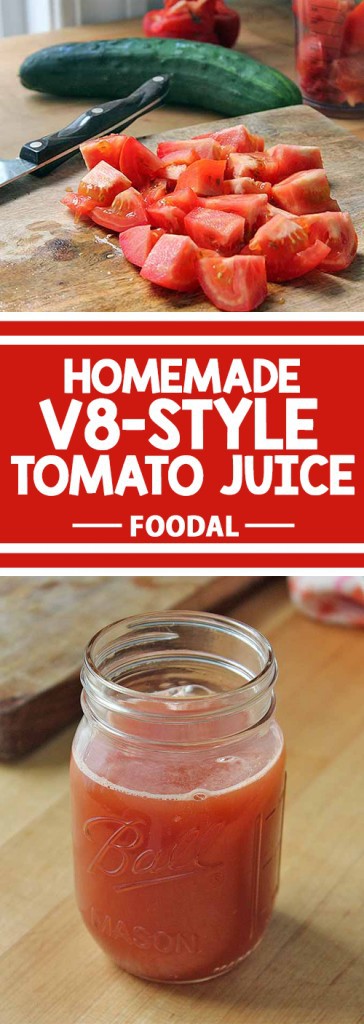
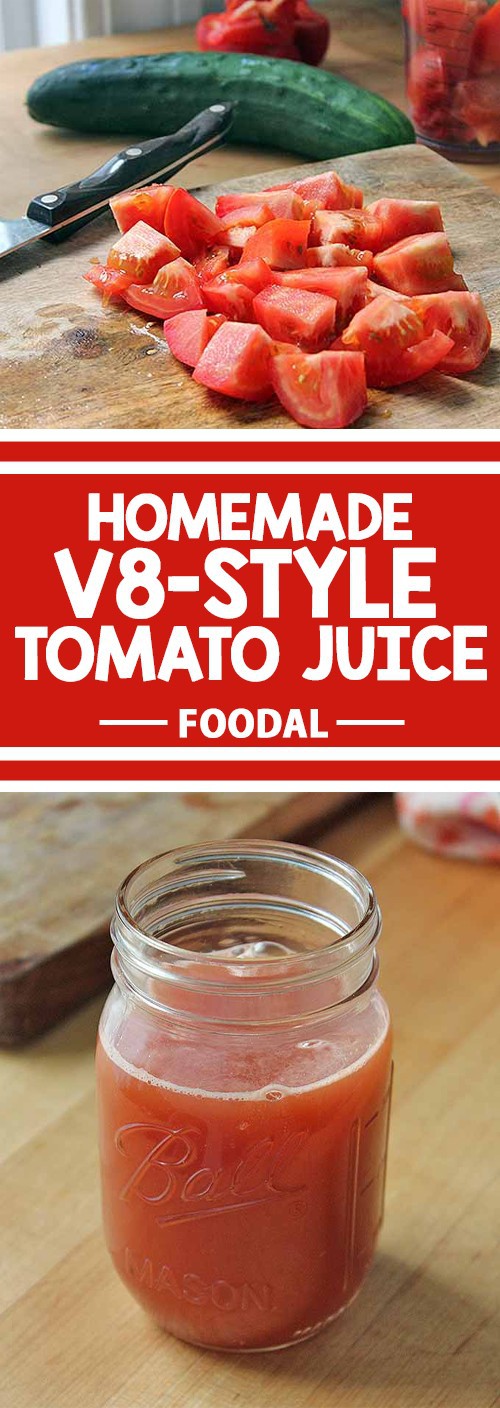

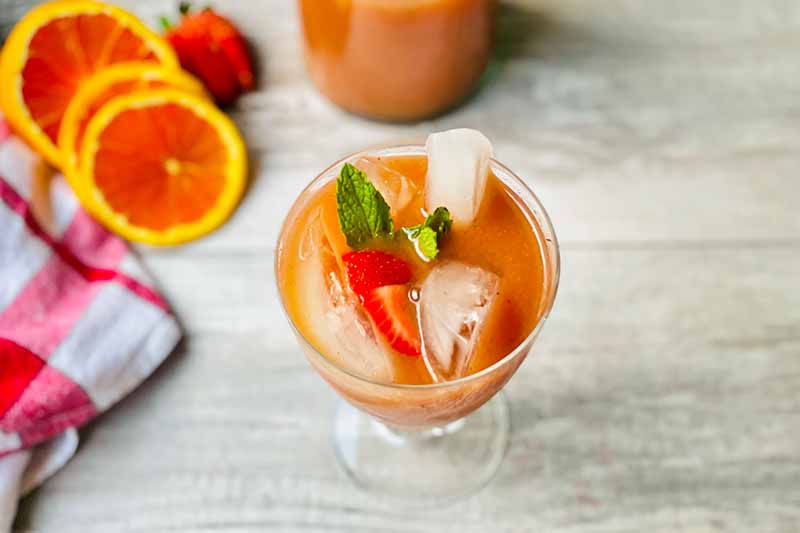

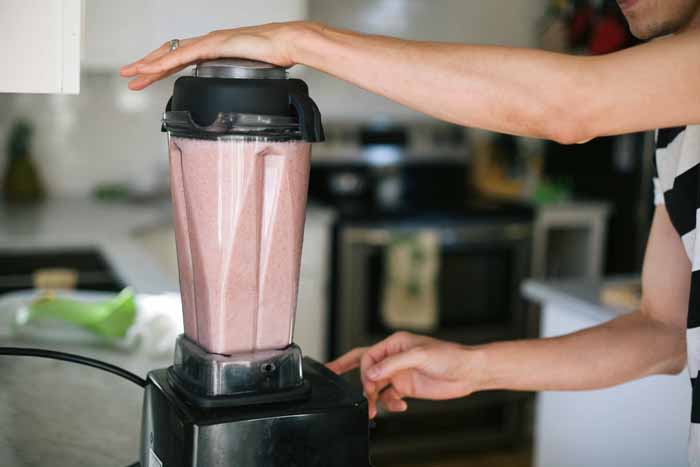
Thanks for sharing, this was really helpful
Hi Adam –
I’m so glad you are reading Foodal, and found this article useful.
Regards,
Nan Schiller
I really loved your article.
The recipe’s healing, and you explained it beautifully. Your writing style impressed me – I’m an aspirant – and I really enjoyed reading your work.
I’m already certain I’m going to love your blog.
Where does the sugar content come from in this recipe?
Hi Gayle. The sugar mostly comes from the tomatoes, with a smaller percentage coming from the other vegetable as well. Note that this is natural sugar, not added sugar.
I couldn’t follow your blend to the T because It’s winter and my herbs aren’t growing right now. But I wanted to say thank you! I never would have thought to juice an onion. But it’s delicious! I’m excited about the possibilities that you’ve opened up to me! Thank you!
So glad you enjoyed the recipe! Onion is an awesome savory option for juicing, isn’t it?
where does the high sodium content come from? My husband is on a low sodium diet and loved vegetable juice. What can I do to lower sodium content?
The sodium in this recipe comes almost entirely from the added salt, which is there for flavor and can be added to taste or omitted entirely if you choose- that’s part of the beauty of making your own juices at home! Raw celery contains a negligible amount of naturally occurring sodium, about 15 mg per medium-sized stalk. The rest of the vegetables naturally contain very tiny amounts as well, about 15 mg combined. Hope your husband enjoys the juice!
Hi… I have always wanted to make tomato juice. My sugar has gone up a bit and I believe tomato juice is quite healthy for this… is it true? Any juices or smoothie low in sugar would be very much appreciated please… God bless… from Maria.
Hi Maria,
While this question is best discussed with your healthcare provider, as a dietitian I have not seen any studies that have shown tomato juice to help reduce blood sugar levels. However, tomato juice does have anti-inflammatory properties and has been shown to help reduce blood pressure levels in individuals with type 2 diabetes. Still, if you enjoy making your own tomato juice, there are health benefits to it, just make sure to watch your portion sizes as there are still natural sugars present. One tip is to drink tomato juice along with a meal that contains protein (such as eggs, chicken, fish, or beans). This will help keep your blood sugar levels more stable as well. While not a smoothie, be sure to check out our Ginger Lavender Tonic, which is low in sugar and contains fresh ginger, which may help lower blood sugar levels. https://foodal.com/drinks-2/everything-else/ginger-lavender-tonic/
Can I just use tomatoes for my fresh juice because I have a garden full of tomatoes? My mom always said to just blend them in a food processor and just add hot sauce to it and let it cook for about an hour or until it’s boiling. Then have my canning jars ready to pour the tomato juice in, then add a teaspoon of salt and seal them tightly.
Who could ask for more, great stuff. More info than I bargained for when looking for a juice mix. Fantastic.
Can this recipe be canned?
We haven’t tested it for that, and we recommend serving this juice fresh. Canning juice generally involves cooking the produce.
Looks like a good way to use my home grown tomatoes for. Adding a little Horseradish can give it a little zing as I do when making Bloody Marys from scratch